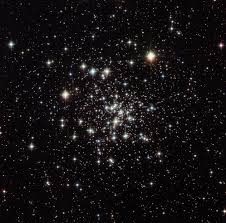Through the Spitzer Telescope at Caltech and achival images from the Hubble Telescope, astronomers have started to find more evidence on the end of the universe’s “Dark Ages”. Scientists have observed over 130 galaxies from this time frame, which is the second half of the universe’s first billion years of existence. These images of ancient galaxies, showing much brighter than modern ones, indicate significantly higher levels of infrared light. Infrared radiation would have hit neutral hydrogen and ionized it, thus ending the “Dark Ages” of hydrogen neutrality.
Just after the Big Bang, the universe was full of hydrogen ions and the constituent particles of light. It was too hot to “see” them then. Protons, neutrons, and electrons were hurled together in a brew that scattered light like a fog. As the universe cooled, for a brief while, light became visible and shot out across space, giving us its record in the cosmic microwave background.
Hydrogen atoms, initially ionized by Big-Bang heat, aquired an electron apiece, making them neutral. Neutral hydrogen blocks shorter wavelengths like UV, X, and gamma. Consequently, the universe lost its transparency in those wavelengths and went relatively dark about 400,000 years after the Big Bang.
The Epoch of Reionization started roughly 400 million years after the Big Bang. The oldest stars, quasars and galaxies started to reionize neutral hydrogen atoms. Short-wave radiation from these celestial bodies stripped the electrons from hydrogen. This unblocked the shorter wavelengths, and they began to travel the universe again. The ancient galaxies feature stars that are massive and made almost exclusively of hydrogen and helium. Stars in modern galaxies have much more nitrogen, oxygen, and carbon atoms. They do not emit as much infrared light, and they are relatively darker at those wavelengths compared to ancient stars. At certain frequencies, the oldest stars shine brighter than the modern ones.
In 2021, NASA will launch the James Webb Telescope to further investigate the oldest, or “Population III,” stars in the universe and their galaxies. Much will be revealed about the Epoch of Reionization.



